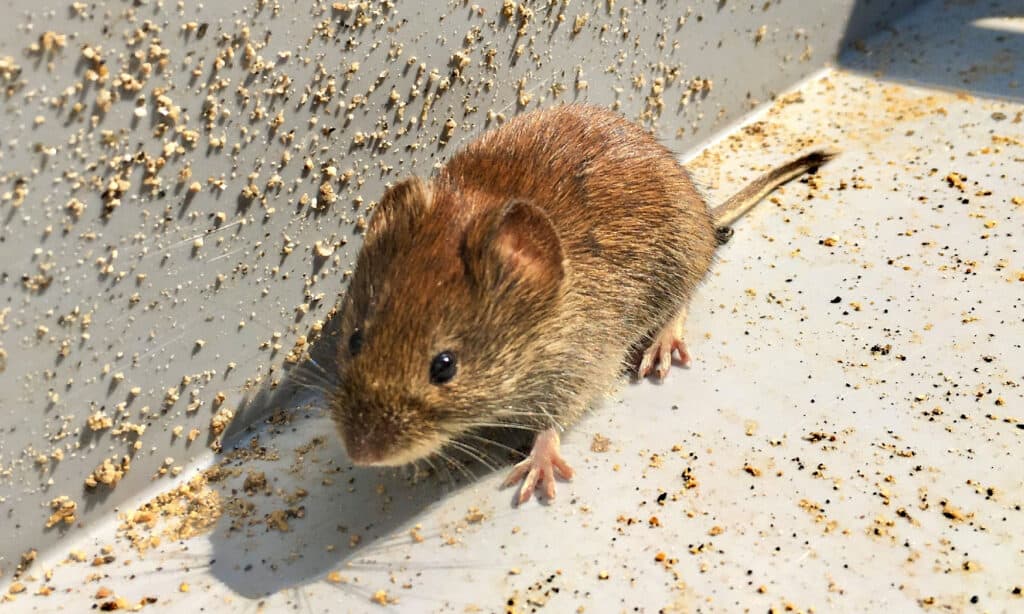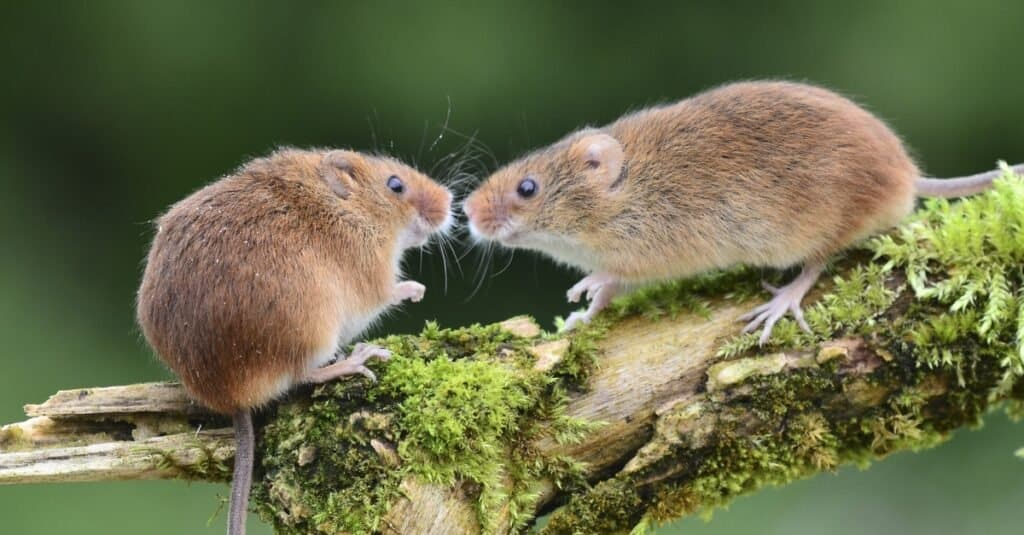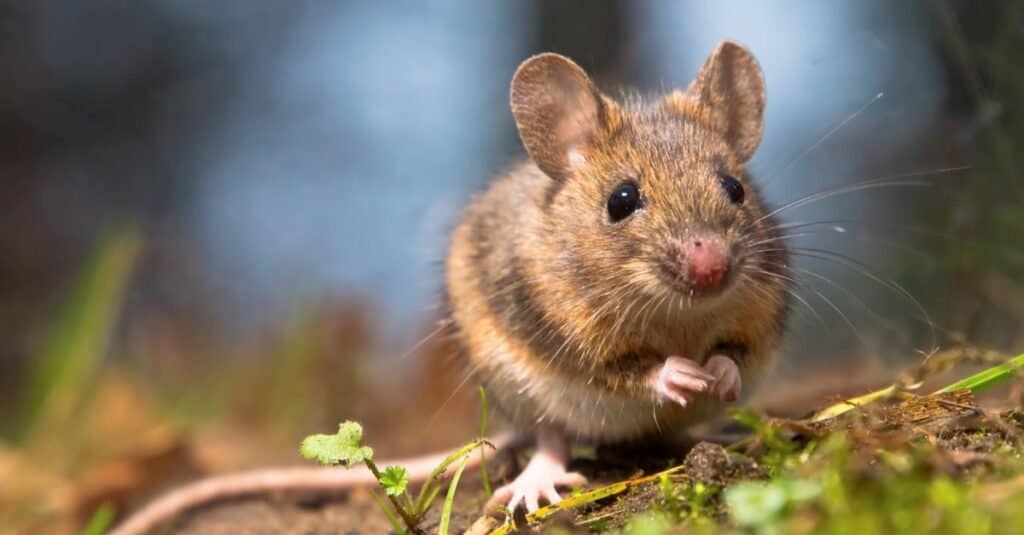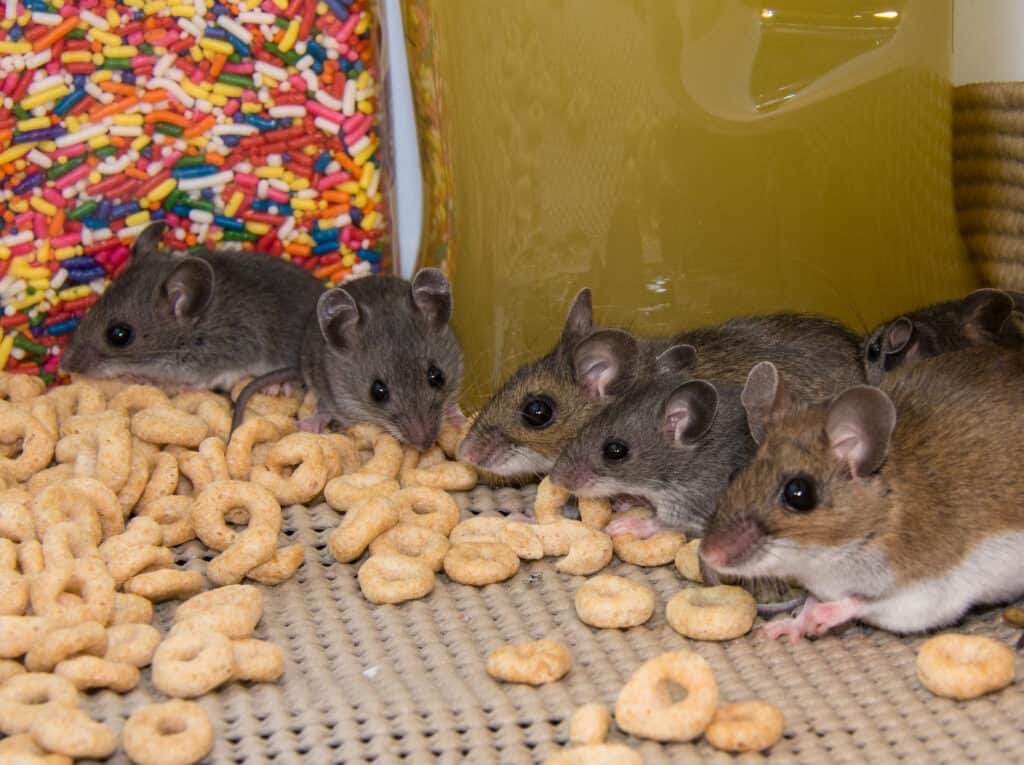Mice are cute, courageous, scrappy, and smart. Unfortunately, these little ones also carry a lot of diseases, so you definitely don’t want mice in your home!
That makes it all the more difficult when these intelligent invaders enter your home as the seasons change. It hurts to kill such a cute and innocent critter, but what else can you do? We’ll discuss some alternative options at the end of the article.
But first, where do mice go in the winter? What do they do out in nature, and how do they respond to a change in temperature when there are human structures near?
Let’s find out.
Mice Don’t Hibernate in Winter

Mice don’t hibernate; instead, they find a warm place to shack up and rest in between food-foraging sessions.
©iStock.com/Bruno_il_segretario
Your first thought might have been that mice hibernate. They don’t. Instead, they find a warm place to shack up and rest in between food-foraging sessions.
In the wild, that warm place is their nest. A nest might be tucked comfortably into the roots of a tree or bush, stuffed down into a rock crevice, or forged in any other warm location. Nests include numerous natural objects that protect mice from the cold.
It’s also important that the nest is shielded from predators. For this reason, mice are incredibly good at finding hard-to-access places for their nests. That’s why you might not know where mice live in your home, even if you see them scurry out occasionally.
Out in the wild, though, mice usually leave their nests only to find food. They’re snuggling up in their dens with their families the rest of the time.
Mice have very short gestation periods, allowing them to have large families. A group of mice has been beautifully named a “mischief.” A particular mischief might be upwards of 25 mice, and that population size makes it easier for them to find food and stay warm in their winter dens.
Mice in the Presence of Human Dwellings
A mouse’s chief priority is to find a warm place to live in the winter, specifically one that’s shielded from predators. Unfortunately, for many of us, that means they find their way into our homes.
Crawlspaces, attics, walls, furniture, garages, boxes, dressers, and more are all prime places for mice to make their dens. So long as the area is undisturbed and warm, a mischief of mice can settle down almost anywhere in your residence.
To the chagrin of people everywhere, our homes are also littered with opportunities for finding food. In the earth’s history, there has probably never been a better place for a mouse to live than a human home.
That’s why so many mice start showing up right around wintertime. You see one scurry across the floor and think, “what! I thought I took care of that mouse last year!”
Mischief might use your home as its home base all year, or maybe it comes back seasonally because it knows your house is safe. In any case, it’s not ideal.
So, how can you take care of your mouse problem this winter? Let’s look at some of the most common and effective options to date.
How to Get Rid of Mice in Your Home in Winter

Mice can chew through anything softer than their teeth.
©colin robert varndell/Shutterstock.com
The first thing you want to do is identify the general location of the nest. If there is a nest, you’ll need to eliminate it before things worsen. If you don’t take care of the nest, mice will be free to feed, reproduce, and further damage your home.
Start by locating the signs they leave behind, then place traps near that location.
You’ve likely seen a mouse somewhere in your home, so start checking the direction in which it scurried off when you noticed it. Mice will often leave feces and urine along their most commonly traveled trails.
That’s the unfortunate truth, and it gets even worse, considering they normally do this where you store your food. You might also see grease smudges, gnaw marks, or hear scuffling in the walls. Now that you’ve found the general location of the nest, it’s time to place a few traps.
Trap Placement and Selection
While you might think killing the mouse is your only option, that’s not necessarily true. Mice that get stuck in sticky traps and even snap traps might not die right away; leaving them there for long periods is inhumane.
Find mouse traps that capture the mouse alive, allowing you to relocate them. Plenty of humane traps are available online, but just make sure you buy one that is the appropriate size.
If it’s too big for the mice in your home, they might get away. If it’s too small, it might hurt the mice.
Place a few traps at key points around your house. Choose the areas where you’ve noticed signs of critters. Pantries, holes in the wall, cupboards, and garage floors are great places to start.
Releasing The Mice You’ve Captured

A wildwood mouse sitting on the forest floor.
©iStock.com/CreativeNature_nl
Once you get a mouse in your clutches, you want to release it somewhere it won’t return. For example, setting the mouse outside in your yard won’t do any good. It will just go right back to its den.
Rather, you want to set it somewhere that will allow it to keep living, just not in your home or someone else’s. Remember, this little mouse only has a year or two to live in almost any circumstance, so why not let it thrive?
An old abandoned structure is the best bet for a wild mouse’s survival. So long as it’s remote and separated from other places that people frequent, your little mouse should easily settle there.
A good second option is a wooded area near a creek or stream. Those environments are rife with nesting areas, food sources, and even other mice to link up with.
After all, the mouse only did what was best for itself when it entered your home. You’d do the same, so why not just give the little feller another shot at a decent life?
Eliminating the Infestation
Once you get your first mouse, cross your fingers and hope that it was the only one. Odds are that you’ll get a few more before the activity stops. Keep setting traps until you stop seeing activity in your home.
If things don’t slow down, you’ve got an infestation on your hands. That’s a little different than one or two freeloaders.
A full infestation is an issue. It’s a fire hazard, a health hazard, and it will do a number on your mental health if you let it stay.
At this point, you should call a pest control company. They typically have an arsenal of humane removal practices. Unfortunately, an infestation means you’ve got to throw in the towel and hand the job over to the professionals.
What to Do After the Infestation

If you have one mouse in your house, you must eliminate it before it leads to an infestation.
©Landshark1/Shutterstock.com
Once the mice are gone, it’s time to defend your home for next year. If one group found an entrance, others will, too.
This might require professional assistance, but with careful examination of your home, you can identify where they came in and seal that opening shut.
Further, make your home less hospitable to mice by cleaning up and locking down foods, possible bedding materials and removing clutter. If you think of your home from a tiny mouse’s perspective, a laundry-laden minefield of scraps seems pretty good.
If you and your family have the ability, you might consider adding a rescue dog or cat to your family. With any luck, your furry friend will already have some experience hunting down mice, and mice will steer clear of your home if you’re housing one of their natural predators.
With that said, good luck to you in your crusade against the mischief in your home!
The photo featured at the top of this post is © iStock.com/Bruno_il_segretario
Thank you for reading! Have some feedback for us? Contact the AZ Animals editorial team.






